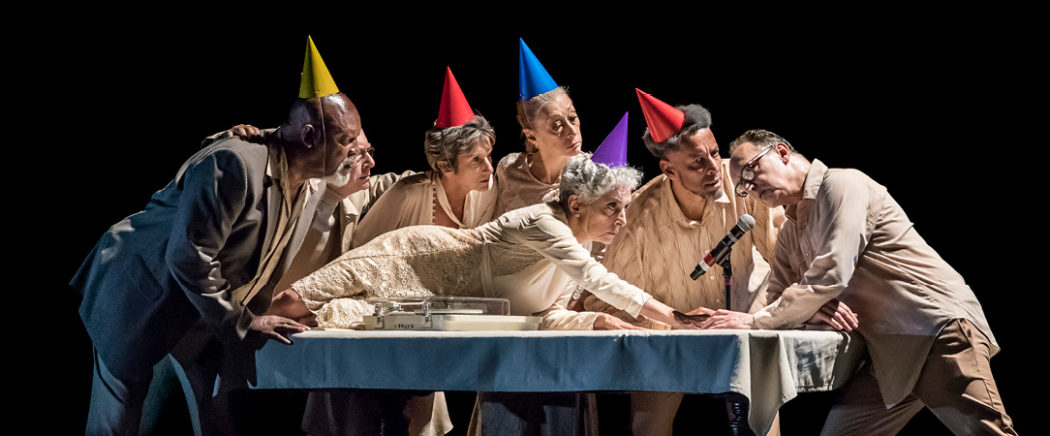Paul Lazar: The Road Awaits Us: Where’s the title from?
Annie-B Parson: it’s the last line of The Cherry Orchard!
PL: Why Cherry Orchard? And, why the last line?
ABP: it was January 2017 when I received the commission from Sadler’s Wells to make a work on their company of elders. Trump had just been elected, and a deep confusion set in immediately, a sense of dread and … I was doing lots of protesting – standing, marching, yelling, making signs, writing letters, calling senators’ offices and telling interns how I felt about our democracy – well, it all seemed so hopeless and absurd to me. So, when I thought about engaging elders on stage, I was drawn to how they naturally hold a longer history of our collective experiences in their bodies, and I hoped that I could bring that out somehow as solace and perspective. I had this image that if they could be very simple and use the tool of a very simple play as a text – as a context to start to think about what’s going on … Well I remembered that Ionesco had written a play where he used only text from his English primer! He was learning English, so he wrote a play limited to these simple English lessons as material. Sentences. I re-read this play, The Bald Soprano, took out the narrative and kept the absurd language and tone. It felt right.
PL: But then how does The Cherry Orchard come in?
ABP: Sort of snuck in the back door – the end of The Bald Soprano felt wrong for this moment. I think the difference between the absurdity of the late 50’s and today, is that post-Obama we now hold a kind of sadness, maybe despair, around an aspiration of what our country might be … this reminded me tonally of the end of The Cherry Orchard. Again, removing the narrative, but holding on to just the elegiac atmosphere of the “end” of things – of a certain way of living with some utopian vision. (pause) How about Cage? Why Cage now?
PL: My response to “Why Cage now” is very much in concert with what you, Annie, are talking about here. In our mind-bending moment with the fragile threads of our social fabric being trampled on, the question of how to live comes to the fore. I experience the Cage text – a random selection of one-minute stories – as a resonant, funny, invigoratingly, valuable, multi-faceted “answer” to the question of how to live. In dancing your choreography while speaking the Cage stories, I feel that I am attesting to the presence of inexplicable forces in our midst that transcend the deadening discourse of our current day.
ABP: And circling around – this How to live question – it’s for sure a Chekhovian question as well. I think the Ionesco poses questions, it does the Chaplin thing of – If you want to talk about seeing, put a blind man on stage.
PL: … and the Cage, suggests a perspective.
ABP: Yeah. Maybe these two pieces will speak to each other like when you are reading two books and they start to talk to each other!
Annie-B Parson is a choreographer. She co-founded Big Dance Theater in 1991, and most recently staged and choreographed David Byrne’s “American Utopia” on Broadway. She has been teaching choreography at NYU/ETW since 1993. Paul Lazar, a founding member of Big Dance Theater, is an actor and director. He currently teaches in the Open Arts Department at NYU.
